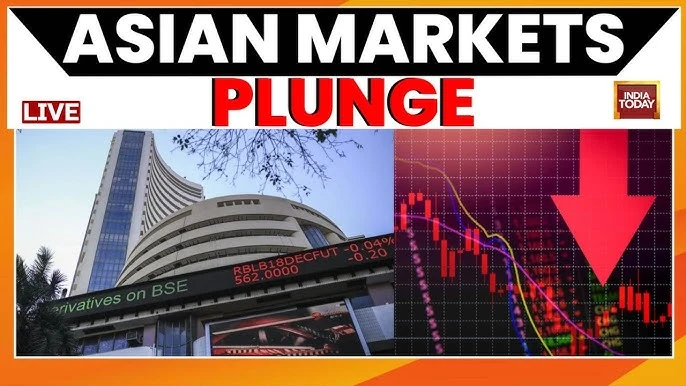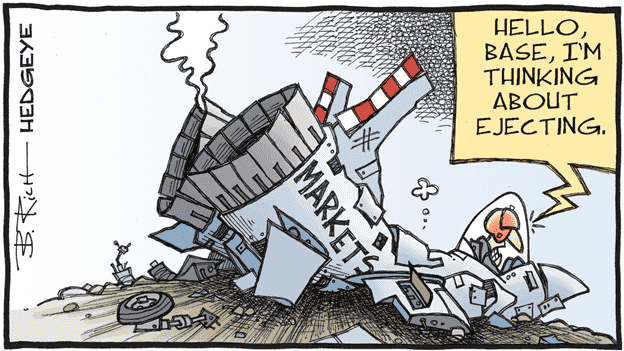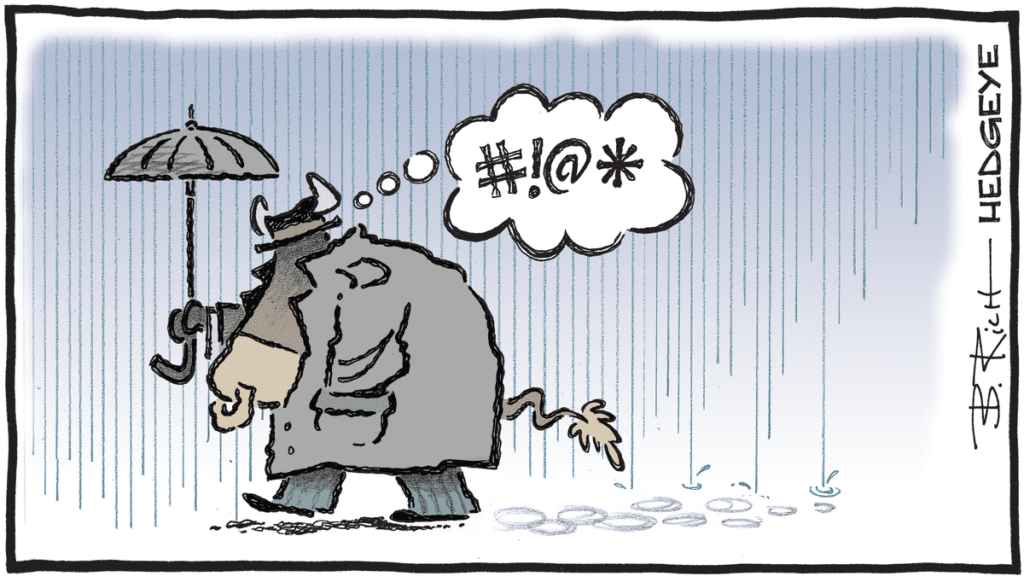
A Worldwide Shockwave from U.S. Tariffs
The global stock market is experiencing one of its most turbulent days in recent years, as fears of a full-scale trade war take center stage. The spark? A sweeping move by U.S. President Donald Trump to impose fresh tariffs ranging from 10% to 50% on a wide range of imported goods. This unexpected decision has created shockwaves across international markets, stoking fears of supply chain disruptions, retaliatory measures, and a potential slowdown in global economic activity. Investors worldwide are reacting with panic, pulling back from equities and rushing toward traditional safe-haven assets. This coordinated selloff has affected all major indices and regions, starting with Asia and rippling through Europe and the U.S.
Asian Markets: Panic Selling Hits Hard
Markets in Asia opened the week with deep losses, reflecting the nervousness surrounding trade uncertainty. Japan’s Nikkei 225 plunged nearly 9%, its worst single-day performance since 2020, driven largely by the collapse of bank and tech stocks. The Topix bank index fell as much as 17.3%, signaling systemic worries. Meanwhile, Hong Kong’s Hang Seng Index recorded a historic drop of almost 12%, the steepest since the 2008 global financial crisis. Taiwan’s Taiex shed 9.7%, nearing a 35-year record low. These sharp declines were accompanied by losses of 5–7% across Shanghai, Singapore, and South Korea. The sentiment in Asia is clear: the region is bracing for serious economic fallout, especially among export-driven economies vulnerable to U.S. policy shifts.
European Equities Dive on Trade War Fears
As markets opened in Europe, investor sentiment remained gripped by fear. The pan-European STOXX 600 tumbled 5.8%, dragged down by autos, banks, and industrials. Germany’s DAX fell 0.7% despite a relatively resilient economic outlook, with German automakers particularly exposed due to the 25% U.S. import tariff on foreign vehicles and auto parts. France’s CAC 40 and Italy’s FTSE MIB were also in the red, losing between 2% and 4%. The overall atmosphere in Europe is one of vulnerability. Companies reliant on cross-border trade are now under pressure, and the likelihood of retaliatory tariffs from the EU is growing. Investors are also watching how central banks may respond in the coming weeks to provide stimulus or policy clarity.
U.S. Market Futures Paint a Gloomy Picture
Although Wall Street hasn’t opened yet, futures are flashing red across the board. Dow Jones Industrial Average futures are pointing to a potential 1,600-point drop, while S&P 500 futures are down more than 3%. Nasdaq futures have slid nearly 4%, as technology companies brace for the impact of higher component costs and weakened demand overseas. These moves follow Friday’s already shaky close, where indexes ended lower on speculation that Trump’s administration was preparing to escalate trade tensions. The fear now is not only immediate profit loss due to tariffs but also a broader dent in consumer confidence and business investment. Analysts warn that if the selloff accelerates during U.S. market hours, circuit breakers might be triggered.
Energy, Oil, and Middle East Currencies Slammed
The turbulence hasn’t spared commodity or emerging markets either. Oil prices have plunged below $60 per barrel, with Brent crude shedding nearly 15% over five days. This has hit the Middle East hard, where local stock markets tumbled across the board—Dubai dropped nearly 6%, Abu Dhabi fell 4%, and Saudi Arabia’s Tadawul Index lost over 6% as Aramco shares sank more than 5%. These nations face a dual crisis: reduced export earnings due to falling oil and increased economic pressure from weakened demand in global trade. Currencies like the Saudi riyal and UAE dirham, though pegged to the dollar, are facing capital flight pressures. With energy stocks sinking and budget deficits looming, regional governments may be forced to cut public spending or borrow heavily.
Investors Rush to Gold While Outlook Remains Uncertain
In the face of mounting uncertainty, investors are seeking refuge in gold, which has now surpassed $3,000 per ounce for the first time ever. Treasury bonds and the U.S. dollar have also seen modest gains, as traders reduce risk exposure. Financial institutions like Goldman Sachs and JPMorgan have already revised global growth forecasts downward, warning of potential recessionary scenarios if trade tensions persist. The next few days will be critical as the world watches for responses from major central banks and policymakers. Meanwhile, markets remain in high alert. For investors, it’s a time to proceed with caution, reassess risk, and prepare for further volatility. Whether this is a short-lived panic or the beginning of a prolonged downturn depends heavily on geopolitical developments—and whether diplomacy can prevail.

A Rush to Washington: Countries Seek Direct Talks with Trump, Dividing Europe
As the U.S. trade war intensifies, countries from across the globe are scrambling to negotiate directly with President Trump in hopes of securing exemptions from the newly imposed tariffs. Leaders from Asia, including Japan, South Korea, and India, have all made their way to the White House to discuss the potential impact of U.S. tariffs on their economies and to seek relief from the sweeping trade measures. Japan, in particular, has expressed concern over the heavy toll on its automotive industry, while South Korea is looking for leniency on steel tariffs. In contrast, China’s attempts to reach a resolution have been met with skepticism, as U.S.-China relations remain at a boiling point. Meanwhile, Europe is experiencing its own form of fragmentation. While some EU countries, such as Germany, are pushing for a united front in resisting the tariffs, others have taken a more self-serving approach. Italy, for example, has been quietly negotiating with the U.S. on a separate trade deal to protect its industries, while countries like France and Spain are voicing concerns over the EU’s inability to act cohesively. This division within Europe has weakened the EU’s negotiating position, as member states prioritize their own national interests over collective action. As a result, the global trade landscape is becoming increasingly fractured, with countries seeking individual agreements that undermine the possibility of a unified response to the U.S. tariffs.
The Role of Emerging Markets: Economic Strain and Currency Instability
Emerging markets are also facing significant challenges as a result of the tariff dispute. Countries like Brazil, Mexico, and Argentina, which are major exporters to the U.S., have already started to feel the impact of reduced demand and supply chain disruptions. In addition, many emerging market currencies are coming under pressure as investors pull out of riskier assets. The Mexican peso, for instance, has fallen sharply against the dollar, while the Brazilian real is nearing historic lows. The economic slowdown in these regions is compounded by higher U.S. interest rates, which are pushing capital away from these developing economies and exacerbating the debt burden. For emerging markets, the trade war not only threatens immediate export losses but also undermines long-term growth prospects. This is leading to increasing calls for international financial institutions like the IMF to step in with assistance packages, although many experts fear that such aid may not be enough to stabilize these vulnerable economies.

Central Banks Respond: Rate Cuts and Stimulus Measures
In the face of growing economic uncertainty, central banks around the world are gearing up to take action. The U.S. Federal Reserve has already hinted at possible rate cuts to mitigate the impact of the trade war on domestic economic activity. With the global economy slowing, other central banks, such as the European Central Bank (ECB) and the Bank of Japan (BOJ), are under increasing pressure to act. The ECB is expected to introduce further monetary stimulus in an attempt to support the Eurozone’s fragile recovery, while the BOJ may need to explore additional quantitative easing measures to stabilize Japan’s economy. Despite these efforts, many economists remain skeptical about the effectiveness of central banks’ interventions, especially in the face of such unpredictable geopolitical risks. Central banks’ ability to prevent a global recession is now in question, as the scale of the trade war continues to overshadow their efforts to boost domestic growth.
The Impact on Global Supply Chains: A Shift in Manufacturing Patterns
The ongoing trade war is having a profound impact on global supply chains, with companies rethinking their manufacturing strategies in response to rising tariffs and political instability. Many businesses that were previously heavily reliant on China for production are now diversifying their supply chains, shifting operations to countries like Vietnam, India, and Mexico. This shift, while aimed at mitigating the risks posed by U.S. tariffs, also introduces new logistical and regulatory challenges for businesses. In particular, the complexity of maintaining efficient cross-border supply chains is leading to higher operational costs, especially for industries like electronics, automotive, and textiles. The disruptions to global trade are expected to result in longer lead times, increased transportation costs, and potential bottlenecks in key production hubs. As a result, businesses are being forced to rethink their global strategies, making investments in alternative markets while contending with a world of greater uncertainty.
A New Era of Geopolitical and Economic Rivalries
The trade war between the U.S. and its trading partners is also ushering in a new era of geopolitical and economic rivalries. Countries are no longer simply navigating a complex network of trade deals—they are actively positioning themselves in a broader struggle for global influence. The rise of China as a dominant economic power has sparked tensions with the U.S., as both nations compete for control over the future of international trade and technology. In Europe, the fallout from the tariffs is widening the gap between long-standing allies, as countries pursue their own national agendas rather than standing united against U.S. policy. This fragmentation is compounded by the growing influence of regional powers like Russia and India, which are seizing opportunities to strengthen their positions in global trade and politics. As the world moves into this new phase of economic competition, traditional alliances are becoming more tenuous, and the future of international cooperation is increasingly uncertain.

